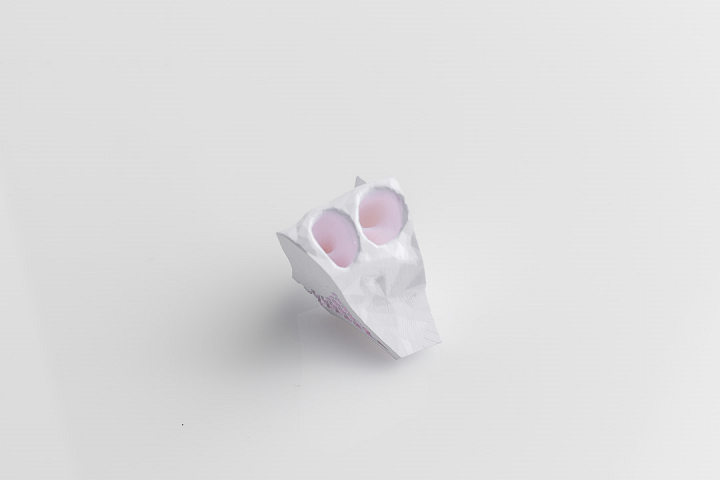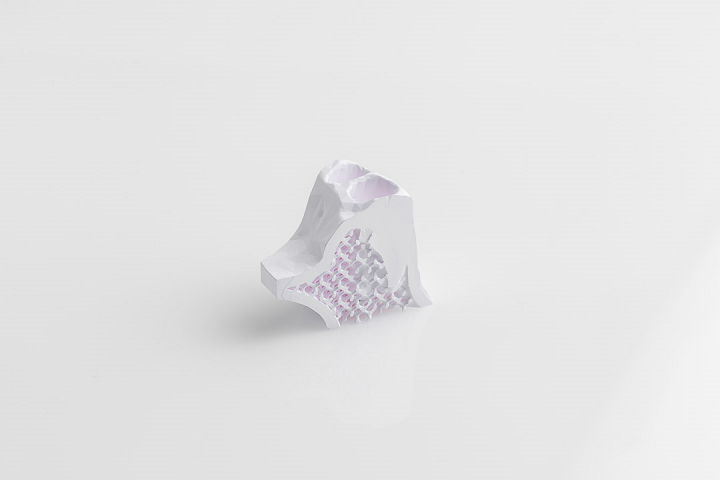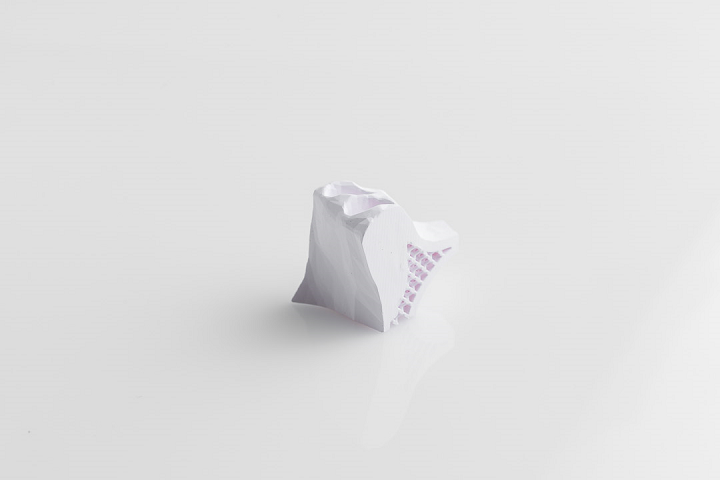Before I started writing about additive manufacturing a number of years ago, I thought ceramics were only used to make fancy pottery. While it is used for this purpose as well, the hard, non-metallic material is so much more than that: it’s strong in compression, can withstand very high temperatures and chemical erosion, and a SmarTech Analysis report suggests that the ceramics AM market will reach an estimated $4.8 billion in revenue by the year 2030.
- Admaflex 130
- Admaflex 300
Focused on advanced ceramics and metal 3D printing, Dutch company Admatec is now introducing bioresorbable ceramics to its portfolio. CAM Bioceramics, an ISO 13485:2016 certified supplier of medical grade ceramics, is supporting Admatec in its endeavor to introduce new 3D printing opportunities for the material via its Admaflex printers in the medical and dental fields.
“As a supplier for the Orthopaedic and Dental market, CAM Bioceramics acknowledges that 3D Printing will play an increasingly significant role in numerous patient treatment plans. Calcium Phosphate based bone reconstructions will play an important part in this next generation medical device solutions due to its proven biocompatibility,” said C. Hogeboom, CEO of CAM Bioceramics. “As one of the market leaders in this area, CAM Bioceramics actively partners with 3D print experts and promotes the evolution of 3D printed solutions.”
Advanced ceramic materials have a great deal of utility in medical applications, particularly when fabricating surgical instruments and implants. 3D-printed, patient-specific implants made from bioresorbable and biocompatible ceramics are often used in craniomaxillofacial and hemimaxillary surgeries, as they can be absorbed by the human body. Native bone tissue will eventually replace the implant, so it won’t need to be removed later along with autologous bone (harvested from the patient’s own body), which can be painful for patients.
While tricalcium phosphate, or bone ash, is often used in this application, bioactive hydroxyapatite—chemically similar to the mineral component of bones—gives the body more time to heal, as it takes longer for the body to absorb it. By working with CAM Bioceramics, Admatec can now use a commercially available hydroxyapatite slurry material in its Admaflex DLP 3D printers to make patient-specific implants.
Implants that are bioresorbable can be made with very defined pore structures and geometries. Additionally, 3D printing these means that it’s possible to define an optimal geometry for the implant, so it perfectly fits the patient. Bone ingrowth from nearby tissues in the body is facilitated by using both dense and porous structures in bone tissue engineering, and 3D printing fits the bill, as it can produce interconnected scaffolds with well-defined sizes and geometries.
“Using Hydroxyapatite, we can manufacture patient-specific, bioresorbable implants, which have defined pore structures and geometries,” Admatec stated in a press release. “Combinations of functional graded ceramic materials, such as dense and porous structures in a single hemi-maxillary bone-like structure, have been printed successfully with help of the lithography based additive manufacturing technology provided by Admatec.”
Admatec’s suggests that its technology can efficiently print complex channels, geometries, and lattice and honeycomb structures with wall thicknesses and features in the 100 μm range. Its batch-oriented process can print larger implants and its multi-part printing software can help print different geometries simultaneously for smaller implants.
“Engineering know-how, flexibility and ease of use of the Admatec system have convinced CAM Bioceramics to collaborate with Admatec in this development thus enabling other medical device companies to take full advantage of this ‘turnkey’ solution,” said Giuseppe Cama, Head of Innovation & Science at CAM Bioceramics. “Customization to optimize patient outcomes can easily be achieved, supported by the physical proximity of the two companies.”
With its newly available bioresorbable ceramics, Admatec can offer medical device manufacturers even more customized solutions. For instance, the company is now working on multimaterial DLP 3D printing, where a combination of zirconia and hydroxyapatite is used to print combination implants for the lower jaw.
Large bone defects resulting from tumors or severe trauma can’t heal on their own without assistance, and one potential solution is a cage, 3D printed out of high-strength zirconia or another ceramic material, that can support the area while it’s healing. The cage would be paired with an implant, featuring an inner volume of bioresorbable ceramic, like hydroxyapatite, and because they’re biocompatible, both could be left in the body.
Discuss this story and other 3D printing topics at 3DPrintBoard.com or share your thoughts in the Facebook comments below.
(Source/Images: Admatec)
Subscribe to Our Email Newsletter
Stay up-to-date on all the latest news from the 3D printing industry and receive information and offers from third party vendors.
You May Also Like
Nylon 3D Printed Parts Made More Functional with Coatings & Colors
Parts 3D printed from polyamide (PA, Nylon) 12 using powder bed fusion (PBF) are a mainstay in the additive manufacturing (AM) industry. While post-finishing processes have improved the porosity of...
3DPOD Episode 193: Flow and What’s Possible in 3D Printing with Ricky Wildman, University of Nottingham
Ricky Wildman is working on 3D printing pills, but, as Professor of Multiphase Flow and Physics at Nottingham, he does a whole lot more. His research encompasses the characterization of...
3D Printing Webinar and Event Roundup: March 17, 2024
It’s another busy week of webinars and events, including SALMED 2024 and AM Forum in Berlin. Stratasys continues its in-person training and is offering two webinars, ASTM is holding a...
3D Printed Micro Antenna is 15% Smaller and 6X Lighter
Horizon Microtechnologies has achieved success in creating a high-frequency D-Band horn antenna through micro 3D printing. However, this achievement did not rely solely on 3D printing; it involved a combination...



































